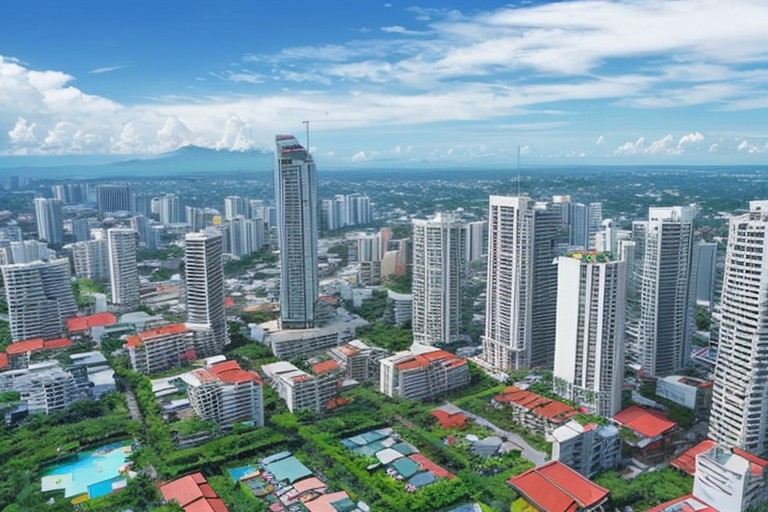
The 1% Rule: A Realistic Look for Philippines Real Estate Investments
The 1 Percent Rule in Real Estate: Why It Doesn’t Always Work in the Philippines
The 1 percent rule is a popular guideline in real estate investing. It says that your monthly rent should equal 1 percent of the property’s purchase price. Sounds simple enough, right? But when it comes to real estate in the Philippines, this rule can fall short. Here’s why a more flexible and realistic approach is needed.
Market Realities in the Philippines: Why 1 Percent Might Be Out of Reach
The 1 percent rule works in some markets—but in the Philippines, it’s often unrealistic. Let’s break it down:
-
Take a P10,000,000 Property
According to the rule, you’d need to earn P100,000 in rent every month. That’s tough to find in most areas. -
Typical Rental Yields Are Lower
In the Philippines, rental yields usually range from 4 to 8 percent per year. That translates to less than 1 percent per month—more like 0.3 to 0.6 percent. -
What This Means for You
Expecting 1 percent monthly returns might cause you to pass on good investment opportunities that offer steady income and solid long-term value.
So, while the 1 percent rule gives a quick way to check returns, it doesn’t always reflect the reality of the Philippine market.
Beyond Rental Income: A Smarter Way to Invest in Philippine Real Estate
Looking at rental income alone gives you only part of the story. There are other key factors that can boost your investment returns in the Philippines.
Don’t Miss Out on Long-Term Growth
-
Property Appreciation Matters
The 1 percent rule ignores how property values rise over time. In the Philippines, areas with new infrastructure or growing demand often see steady appreciation. That future value might matter more than hitting a high rent now. -
Vacancy Happens
No property is rented 100 percent of the time. The 1 percent rule assumes non-stop income, but vacancies are part of the game. Skipping over this can give you an inflated sense of your returns. -
Maintenance Costs Add Up
From taxes and repairs to association dues and upkeep, owning a property comes with ongoing expenses. If you’re only looking at rental income, you’re missing the full picture of your net return.
A Realistic Approach Yields Better Results
While the 1 percent rule might work elsewhere, it’s not always a reliable tool in the Philippines. Smart investors here look beyond monthly rent. They weigh long-term appreciation, account for downtime, and budget for expenses. That’s how you build a strategy that actually works—and one that stands the test of time.
The S&P 500 Comparison: Balancing Risk and Return
The 1% rule might not be the best benchmark for real estate investment in the Philippines, especially when compared to alternative investment opportunities like the S&P 500. Here’s how the two stack up:
S&P 500’s Strong Returns
The S&P 500—an index tracking 500 of the largest U.S. companies—has historically delivered an average annual return of around 10%. This is a significantly higher potential return compared to Philippine real estate, where rental income usually falls between 4% and 8% annually.
Risk and Reward
While the S&P 500 promises higher returns, it also comes with greater volatility. Stock markets can fluctuate wildly, and losses are always a possibility. In contrast, real estate tends to offer a more stable investment, often with steady long-term appreciation. However, the rental income might be lower than what you could expect from the stock market.
The key takeaway here is that the 1% rule overlooks the risk-reward balance of different investments. Philippine real estate might not offer the same high returns as the S&P 500, but it generally comes with lower volatility and the added benefit of being a physical asset.
Conducting Thorough Market Research
Before making any investment, thorough market research is essential:
Rental Rates
Use online platforms, consult real estate agents, and dive deep into local rental market trends. Compare similar properties in your target location and set realistic rental income expectations based on actual market data.
Understanding the Local Market
Rental yields in the Philippines vary by area. Study market trends, research ongoing and upcoming infrastructure projects, and evaluate the long-term growth potential of the area you’re considering. This research will help you make better-informed decisions.
By gathering comprehensive market data, you can set more realistic income expectations and target properties that are likely to deliver strong rental returns.
Embracing a Long-Term Perspective
Real estate is inherently a long-term investment:
Appreciation Potential
Even though rental income may not meet the 1% rule, Philippine real estate has historically shown strong appreciation potential. Focus on properties in areas with growing development prospects or limited supply. These properties are more likely to see significant capital gains over time.
Portfolio Diversification
Real estate is an excellent tool for diversifying your investment portfolio. By including real estate alongside stocks or other assets, you can balance risk and improve overall portfolio performance.
Final Thoughts
In conclusion, the 1% rule is a limited measure when it comes to real estate investments in the Philippines. By doing your homework with thorough market research, accounting for all expenses, and adopting a long-term view, you can make informed investment decisions that align with your financial goals and the realities of the local market.
Beyond the 1 Percent Rule: Smarter Ways to Invest in Philippine Real Estate
The 1 percent rule is a well-known shortcut in real estate investing. It says that your monthly rental income should equal at least 1 percent of the property’s purchase price. While this sounds like a simple way to measure returns, applying it to the Philippine market requires a more thoughtful approach. Here’s why the 1 percent rule doesn’t always work—and where you can find helpful resources to make smarter investment choices.
Helpful Resources for Market Research and Due Diligence
If you’re investing in the Philippines, doing your homework is key. These trusted platforms can help you understand the local real estate landscape:
-
Lamudi Philippines – lamudi.com.ph
Browse property listings, track rental price trends, and explore real estate tools for buyers and investors. -
Philippine Property Report – thepropertyreport.com
Get real estate news, expert insights, and market analysis focused on the Philippine property sector. -
The Philippine Real Estate Board (PRC) – prc.gov.ph
Access a directory of licensed real estate professionals and learn about official appraisal and valuation procedures.
Additional Resources to Guide Smart Investment Decisions
-
Bangko Sentral ng Pilipinas (BSP) – bsp.gov.ph
Monitor economic trends and indicators that could influence real estate investments, like inflation, interest rates, and housing loan data. -
Association of Real Estate Brokers Philippines (AREB) – rebap.com.ph
Find ethical, professional brokers and access educational materials about real estate best practices.
These tools are a great starting point, but don’t stop there. Partnering with a trusted real estate agent and financial advisor can help you align your strategy with your goals and risk tolerance.
Alternative Investment Strategies for Philippine Real Estate
The 1 percent rule is just one lens for viewing a deal. Here are better ways to evaluate property investments in the Philippines:
1. Market Research and On-the-Ground Due Diligence
-
Check Local Rental Rates
Compare similar properties in your area of interest. Use online listings and talk to agents to gauge the going rates based on size, location, and amenities. -
Understand Area Dynamics
Look into development plans, infrastructure projects, and local growth trends. A promising location today can become a high-value zone tomorrow. -
Inspect the Property
Assess the building’s age, structure, materials used, and any potential repair costs before making an offer.
2. Financial Viability and Net Yield
-
Count All the Costs
It’s not just about the purchase price. Budget for property taxes, insurance, repairs, association dues, and vacancy losses. -
Vacancy Risk
Not all rentals are fully occupied year-round. Use local vacancy data to estimate how often the unit might sit empty. -
Calculate Net Returns
Subtract all your ongoing expenses from your projected rental income. This gives you a clearer view of the actual profit—not just gross rental numbers.
3. Think Long-Term and Focus on Capital Gains
-
Track Appreciation Trends
Rental income might fall below the 1 percent rule, but property values in growing areas often appreciate significantly. Look for areas with rising demand or limited supply. -
Diversify Your Portfolio
Real estate adds a layer of stability and diversification. It balances out risk if your other investments are in stocks, crypto, or other volatile assets.
4. Seek Professional Guidance
-
Talk to a Real Estate Agent
A good agent will know the local market, help you assess a property’s value, and guide you through negotiation and paperwork. -
Work with a Financial Advisor
They can help tailor your investment to fit your financial goals, income needs, and risk tolerance.
Final Thoughts
The 1 percent rule may be a useful shortcut in some markets—but it doesn’t paint the full picture in the Philippines. Instead, focus on detailed research, real expenses, and long-term growth. When you take a well-rounded approach, you’ll be in a much stronger position to make smart real estate decisions that work for your goals and for the realities of the local market.

















